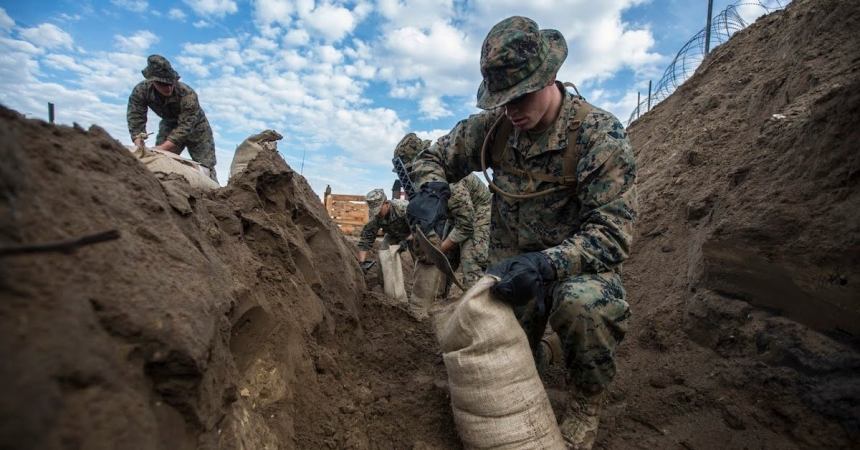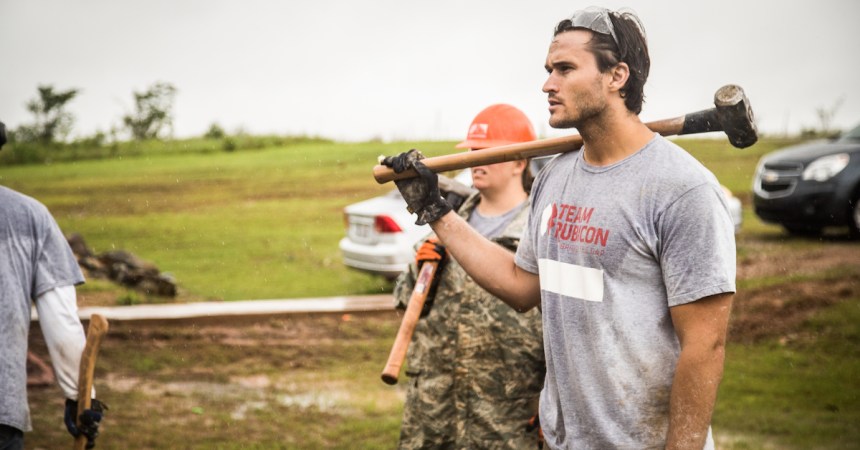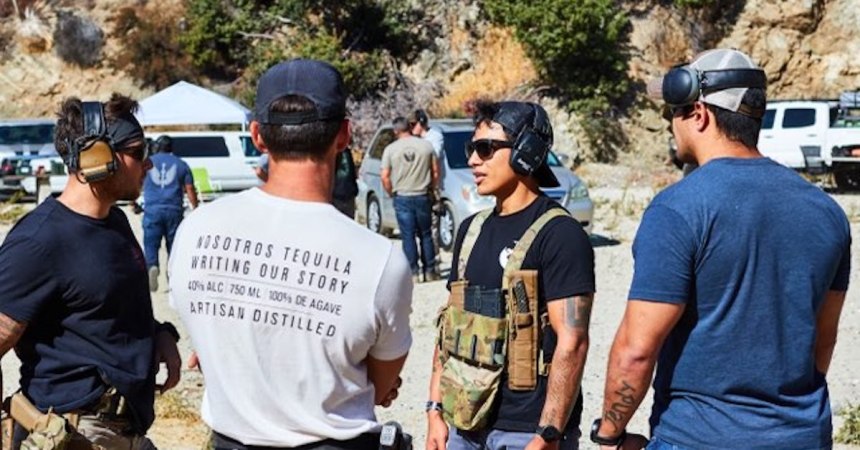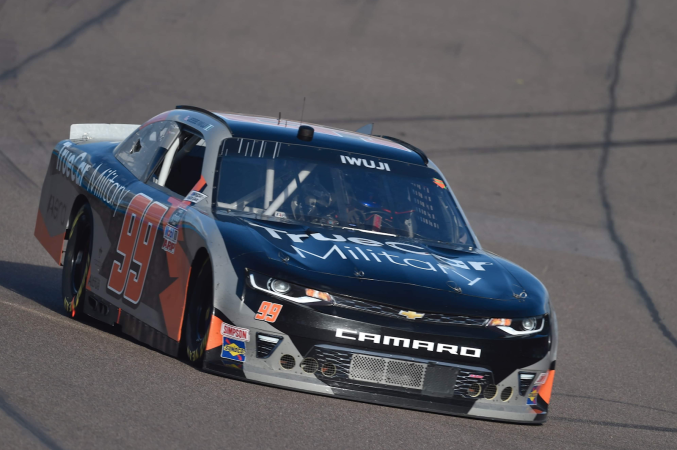
For decades, the U.S. military and its private-sector partners have been working toward a technology straight out of science fiction: robotic suits.
And it’s no surprise. Exoskeletons could add to soldiers’ natural strength, letting troops lift seemingly impossible loads and dart across the battlefield at incredible speed.
Currently, the military is exploring creating an Iron Man-like specialized suit through the Tactical Assault Light Operator Suit (TALOS) program. The suit would provide soldiers with enhanced mobility and protection, and it would most likely run on top of an exoskeleton base.
Today’s exoskeletons vary in utility, but they can allow soldiers to carry 17 times more weight than normal and march with significantly less strain on the body. With an XOS 2 suit, for example, a solider can carry 400 pounds but feel the weight of only 23.5.
Although robotic exoskeleton suits have been in development for over 50 years, things really started picking up speed in the 1990s, leading to more and more interest from the U.S military. Now, it’s a clear priority.
As former Air Force Chief of Staff General John Jumper said: “We must give the individual soldier the same capabilities of stealth and standoff that fighter planes have. We must look at the soldier as the system.”
Early 1960s: The Man Amplifier

Throughout the early 1960s, Neil Mizen developed the early stages of the Man Amplifier at Cornell University’s Aeronautical Lab. The suit was intended to have powered gears at the joints to provide additional support and strength.
Although it was hoped that the Amplifier would have military and scientific uses, Mizen could not master the system’s powered gear system, and the suit was never completed. Even so, his research went on to inspire future exoskeleton projects.
1965: The Hardiman Suit

One of the first powered iterations of exoskeletons was General Electric’s 1965 Hardiman Suit, which was co-developed with the U.S. military. The suit built upon the research done for the Man Amplifier.
The Hardiman was intended to lift 1,500 pounds; however, the suit never managed to act as a fully unified machine, and controlling it proved impossible.
Instead, research was focused on one arm of the suit. The arm managed to lift 750 pounds, but it weighed three quarters of a ton alone. The suit was deemed impractical, and the project was eventually abandoned.
1997: The Hybrid Assistive Limb (HAL)
In 1997, the Japanese research firm Cyberdyne started the earliest prototype of the Hybrid Assistive Limb (HAL). The South Korean and U.S. militaries offered to fund the program, but the company wanted to avoid military applications for its technology.
The first prototypes of HAL were created at Tsukuba University with the aim of assisting the disabled and elderly with their daily tasks. The original HAL systems were attached to computers, and the batteries alone weighed 49 pounds.
The HAL 5

In 2013, the fifth-generation HAL prototype, HAL 5, received a global safety certificate for worldwide medical use. It was the first powered exoskeleton to receive this certification.
The HAL 5 is a full-body exoskeleton that weighs a total of 22 pounds. The system functions by sensing bio-signals on the surface of the skin, causing the exoskeleton to mirror the user’s movement. The suit can function for about an hour and a half on a full charge. The suit was used by relief workers during efforts to clean up the partial meltdown of Japan’s Fukushima nuclear power plant, because the suit could allow workers to wear more protective gear and work longer shifts without tiring as quickly.
The Berkeley Lower Extremity Exoskeleton (BLEEX)
The Berkeley Lower Extremity Exoskeleton (BLEEX) entered development in 2000 with a $50 million grant from DARPA. The prototype allowed wearers to carry upward of 200 pounds while feeling no additional weight. The exoskeleton was even capable of traversing rough terrain for extended periods of time.
The BLEEX has been designed so that the legs can be easily removed from the back if the device loses power — thus transforming it back into a standard backpack.
Springtail Exoskeleton Flying Vehicle
In 2001, Trek Aerospace ran its first test of the now-defunct Springtail Exoskeleton Flying Vehicle. The Springtail was considered for military development and even allowed for vertical flight. But ultimately, the project was deemed impractical and never took off.
The Springtail was unique in that it would allow soldiers to fly and hover, effectively taking the role of a personal vertical takeoff and landing (VTOL) vehicle. The Springtail had a maximum speed of 113 miles per hour and could fly for 184 miles and carry a payload of 358 pounds.
The LIFESUIT

Also in 2001, U.S. Army Rangers veteran Monty K. Reed set up North Seattle Robotics Group. The group opened the They Shall Walk non-profit, dedicated to developing LIFESUIT exoskeletons for the disabled.
Reed had a parachute accident while in the military in 1986 that left him with permanent back injuries. During his recovery, Reed became fascinated with the exoskeletons in Robert Heinlein’s novel “Starship Troopers.” The LIFESUIT is in a late stage of development, and it has entered widespread medical trials.
XOS Exoskeleton

In 2000, Sarcos, an engineering and robotics firm in Utah, began designing the XOS Exoskeleton after receiving a grant from DARPA. DARPA accepted Sarcos’ exoskeleton design in 2006, and production of prototypes began that year.
The XOS had to stay connected to a power source to maintain movement. But the suit performed remarkably within this limitation: The XOS allowed users to lift significantly more weight than they could previously. Its actual-to-perceived-weight ratio was 6:1, meaning that a 180-pound load would feel like only 30 pounds.
A lighter, more efficient XOS

In 2007, the defense giant Raytheon purchased Sarcos. In 2010, Raytheon-Sarcos released the XOS 2. The XOS 2 featured a host of improvements over the XOS.
The XOS 2 suit allows users to lift heavy objects at an actual-to-perceived-weight ratio of 17:1. The suit also required 50% less energy than the XOS, while also weighing 10% less than its predecessor.
The XOS 2 is also touted as being more precise, faster, and more portable than the XOS. The military is considering using the XOS 2 in its TALOS project.
The Human Universal Load Carrier

The Human Universal Load Carrier (HULC) began development in 2000 with Berkeley Bionics, which later changed its name to Ekso Bionics. The HULC was a third-generation exoskeleton system, and it incorporated features from two previous Ekso Bionics prototypes.
The HULC was proved to augment the strength of its wearers, allowing them to lift 200 pounds without impediment. The HULC also lowered the wearer’s metabolic cost, meaning soldiers could march with a load while having a decreased oxygen consumption and heart rate.
The HULC’s Military Applications

In 2009, Ekso Bionics licensed the HULC to Lockheed Martin for research into possible military applications. Lockheed continued its development of the HULC along the same lines as Ekso Bionics, but it increased the functionality of the suit to match the military’s needs.
HULC is multi-terrain operational, supports front and back payloads, and has enough power to last for an eight-hour march before having to be recharged. HULC allows a user to perform deep squats or crawl while wearing it, and it supports upper-body lifting as well. HULC is one of the exoskeletons currently being examined by the military for possible use in its TALOS Iron Man suit.
The X1 Mina — NASA’s Exoskeleton

NASA announced that it was creating an exoskeleton as part of a partnership with the Florida Institute for Human and Machine Cognition. The X1 Mina Exoskeleton will have dual functionality. In space and low-gravity environments, the joints of the suit will be stiffer, providing the astronauts with exercise to combat muscle atrophy.
NASA also envisions that the X1 can be used by paraplegics and others with disabilities to provide support while walking. In this case, the X1’s joints can be loosened, providing support to the wearer without being physically taxing.
The Warrior Web Program — DARPA’s Exoskeleton Of The Future

DARPA began its Warrior Web program, aimed at creating a soft and lightweight under-suit that protects wearers’ joints and helps increase the amount of weight a soldier can easily carry while using less than 100 watts of power. One of the most promising designs has come from the firm Boston Dynamics.
The Warrior Web program has produced small exoskeleton-like clothing designs that are meant to be worn under normal uniforms. The overall goal of the program is to increase the endurance of soldiers by lessening the strain on their muscles.
Over the past 50 years, exoskeletons have gone from an unproven and even slightly fanciful technology to systems with medical and aerospace applications. They are becoming lighter, more energy-efficient, and more flexible — meaning that it is probably just a matter of time before the U.S. develops a practical military version.
More from Business Insider:
- Huge Advances In Bionic Suit Technology Are Changing Paralysis Forever
- China just tested a new intercontinental missile that can fire multiple nuclear warheads at once
- John Kerry: I write emails assuming that Russia and China are ‘very likely’ reading them
- This stunning combat art reveals what aerial warfare was like during World War II
- Hilary Clinton: Here’s the ‘principle threat’ ISIS poses to the US
This article originally appeared at Business Insider Defense. Copyright 2015. Follow BI Defense on Twitter.


























